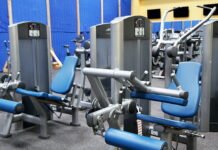Last Updated on March 12, 2024 by admin
The use of robotic surgery in hospitals increased from 1.8% to 15.1% between 2012 and 2018, and those trends are continuing, according to JAMA Network. Robotic surgery for biopsies, tumor removal, and artery repair are just a few of the uses of the advanced surgical technique.
Even as remote surgeries become increasingly common, many people wonder, “are robot surgeries safe?” We’ll debunk some robot surgery myths so you can make better-informed decisions about medical treatments.
Table of Contents
Robots Perform the Surgery. Not Doctors.
The term robot surgery can be misleading. While the surgeon does use a robot in the surgical procedure, the surgeon is still the one conducting the procedure. Just as a scalpel is a surgical tool, the robot is merely a tool that aids the surgeon.
In fact, the surgeon remains very near the patient in the operating room. When the surgeon stops moving, so does the mechanical robot. There is nothing automated about the procedures.
The Robot Can Malfunction During Surgery
Surgical robots are built to incredibly high standards. Before every surgery, the robot is rigorously tested and double-checked. This allows many procedures to be safe surgeries for robots.
There are multiple safety features that prevent the robot from malfunctioning. Robot surgeries have an incredibly safe track record.
Robotic Surgery Has No Advantages Over Traditional Surgery
Robotic surgeries would not be gaining popularity among surgeons if there were no advantages to the surgical treatment option. Robotic surgeries require smaller incisions than traditional surgeries.
Because the surgeon does not have to physically place his or her hands inside the body, the procedures are much less invasive than traditional surgeries. The advantages of this option mean a shorter hospital stay.
There is also less blood loss during the procedure. The small incisions and precise nature of robotic surgery allow for lower rates of complications and a shorter recovery.
Any Surgeon Can Perform Robotic Surgery
Surgeons must complete advanced training before they are allowed to perform surgery using robotic technology. Robotic-assisted surgery requires a unique set of skills and proficiencies.
Most doctors have not undergone the training for robotic-assisted surgery, but a growing number of surgeons are seeking those skills in addition to traditional surgery and laparoscopic techniques.
Robotic Surgery Can Only Be Used on Certain Techniques
If you are exploring what to know about robotic surgery, you should understand that the surgical technique can be used for a wide range of procedures.
Common procedures include:
- Gastrointestinal surgery
- Colorectal surgery
- Head and neck surgery
- Prostate surgery
- Gynecologic surgery
Heart surgery, joint replacement surgery, and a wide range of surgery options also employ robots. The precision that robotic surgery affords makes it an ideal tool for all sorts of surgeries. Click here to learn more about which types of surgery use this technology.
Learn More About Robotic Surgery Procedures
Each year, robotic surgery is used to perform life-saving surgeries. The faster recovery rates and small incisions make robotic-assisted surgery an ideal option for many treatments. The next time that you hear one of the myths in this article, you’ll be able to debunk that misinformation.
If you are looking for a one-stop-shop for all of your medical news, look no further. We keep you informed on the latest in science and medicine.
Read more: A detailed analysis of the medical robotic surgery market






















